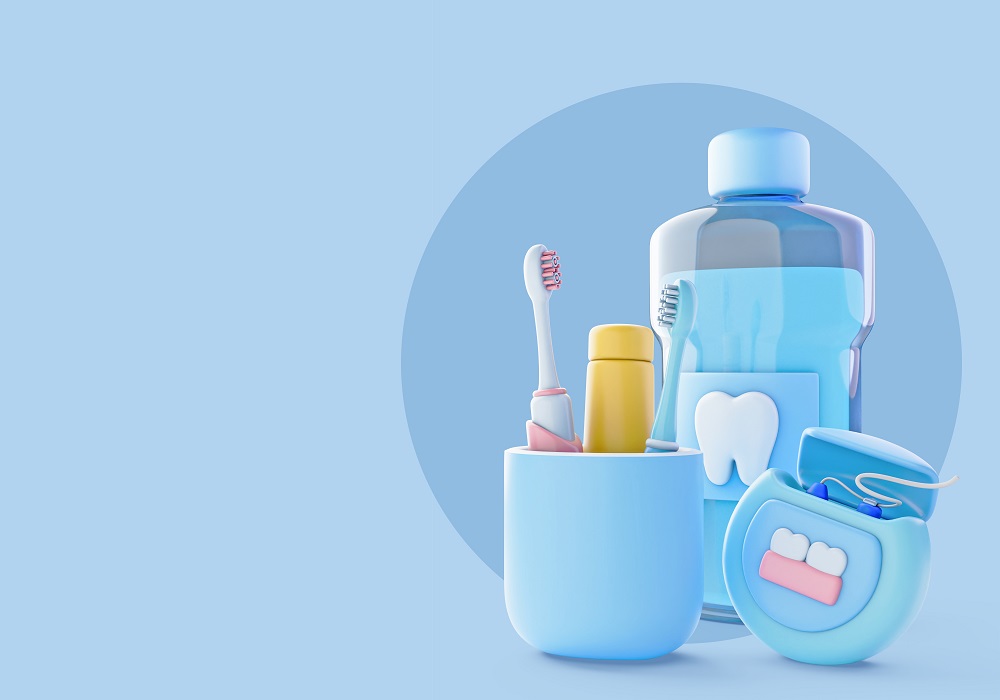What is Dental Cleaning
A dental cleaning, sometimes referred to as a prophylaxis or a hygiene session, is a regular process where your teeth are cleaned of plaque, tartar, and stains. A dental hygienist who has received specialised training in teeth cleaning and oral hygiene education often performs this operation.
In order to remove plaque and tartar from the surface of your teeth and along the gum line during a dental cleaning, the dental hygienist will use a small mirror and a scaler. To polish your teeth and get rid of surface stains, they could also use a strong electric brush and abrasive toothpaste.
When is Dental Scaling Necessary?
Tartar and plaque accumulation on the teeth's surface and underneath the gum line are removed during a dental scaling process. Here are some scenarios where it might be required to scale teeth:
- Periodontal Disease: If you have gum disease, which is brought on by bacteria accumulation behind the gum line, scaling may be required. Scaling assists in removing the bacteria and guards against additional tooth and gum damage.
- Even with routine brushing and flossing, plaque and tartar can still accumulate on the teeth. Scaling aids in removing this accumulation and guards against tooth decay, gum disease, and other oral health problems.
- Bad Breath: Bacteria buildup on the tongue and teeth can result in bad breath. Scaling can help to get rid of this accumulation and make your breath better.
- Teeth with surface stains can be removed by scaling, restoring a whiter, brighter smile.
- In order to make sure that the teeth and gums are healthy before undergoing further dental operations like fillings, crowns, or root canals, scaling may be required.
If your dentist recommends dental scaling, it's important to schedule the procedure as soon as possible to prevent further damage to your teeth and gums. Regular dental cleanings and good oral hygiene practices can also help to prevent the need for scaling in the future.
Dental Cleaning Types
There are various kinds of dental cleanings, each of which is intended to take care of particular dental requirements. The most typical kinds of dental cleanings are as follows:
- Prophylaxis Cleaning: This regular cleaning is advised for patients with sound teeth and gums every six months. The dental hygienist will polish the teeth to remove surface stains and remove plaque and tartar from them during a prophylaxis cleaning.
- Patients with gum disease are advised to undergo a deep cleaning technique called scaling and root planing. Scaling involves eliminating plaque and tartar accumulation from the gum line and the surface of the teeth. To stop more bacterial growth, the tooth roots are smoothed during root planing.
- Patients with substantial plaque and tartar buildup are advised to have a whole mouth dbridement. In order to conduct a more comprehensive examination of the teeth and gums, the dental hygienist will remove as much plaque and tartar as is practical during a full mouth debridement.
- Patients with a history of gum disease are advised to undergo periodontal maintenance, a cleaning procedure. Every three to four months, periodontal maintenance cleanings, which are more thorough than prophylaxis cleanings, may be carried out.
- With air polishing, stains and deposits on the teeth are removed with the aid of a specialised tool. Patients with sensitive teeth may benefit from air polishing because it is less abrasive than conventional polishing techniques.
Your dentist will recommend the appropriate type of dental cleaning based on your individual dental needs. It's important to schedule regular dental cleanings to maintain good oral health and prevent dental problems in the future.
Dental cleaning procedure
The dental cleaning procedure typically involves several steps, including:
- Examination: Before the cleaning begins, the dental hygienist will examine your teeth and gums to identify any areas of concern, such as plaque or tartar buildup, gingivitis, or cavities.
- Scaling: The dental hygienist will use a special tool called a scaler to remove plaque and tartar from the surface of your teeth and along the gum line. This may be done by hand or with an ultrasonic scaler, which uses high-frequency vibrations to break up the buildup.
- Polishing: After the teeth have been scaled, the dental hygienist will use a small, soft brush and an abrasive toothpaste to polish the teeth and remove surface stains.
- Flossing: The dental hygienist will use dental floss to clean between your teeth and remove any remaining plaque or debris.
- Fluoride Treatment: Some dental cleanings may include a fluoride treatment, which involves applying a fluoride gel or varnish to the teeth to help prevent cavities and strengthen tooth enamel.
- Oral Hygiene Education: The dental hygienist will provide education on proper brushing and flossing techniques and recommend any products that may be beneficial for your oral health.
The dental cleaning procedure is generally painless and typically takes 30 to 60 minutes to complete. It's important to schedule regular dental cleanings every six months to maintain good oral health and prevent dental problems.
What are the Benefits of Teeth Cleaning?
Gum disease and early tooth loss are both avoidable with clean teeth.
removal of stains that have caused tooth discolouration
Cavities and dental decay can be avoided by brushing your teeth.
Cleaning keeps the mouth fresh by getting rid of foul breath in a way that brushing and flossing cannot.
As teeth are transformed and tartar and plaque are entirely eliminated, there is a noticeable difference between before and after teeth cleaning.
What are the Side Effects of Cleaning Teeth?
The chances of teeth flaking are very low. If you are at risk of infection, your dentist may advise using an antibiotic or a special mouthwash for a few days or weeks after the procedure. If you are at risk of infection, your dentist may recommend an antibiotic or specialised mouthwash to take for a few days or weeks after the surgery. Contact your dentist if not.
FAQ
Since plaque and tartar will continue to accumulate on your teeth over time, teeth cleaning is not a long-term solution. However, removing this accumulation and maintaining good oral health can be facilitated by routine dental cleanings. To keep your teeth clean and healthy, it is advised to schedule dental cleanings every six months or as your dentist advises. In addition to regular cleanings, it's critical to uphold appropriate oral hygiene practises at home, including twice-day brushing, daily flossing, and mouthwash use.
A dental cleaning typically takes about 30 minutes to 1 hour to complete, depending on the amount of plaque and tartar buildup on your teeth and the condition of your oral health.
Does teThe teeth may appear whiter after having some surface stains removed by dental cleaning. However, significant stains or discolouration brought on by things like ageing, smoking, or specific drugs may not be completely removed by dental cleaning alone. Your dentist may suggest teeth whitening procedures in these situations to help brighten and whiten the teeth. It's crucial to discuss with your dentist the best ways to keep your mouth healthy and improve the appearance of your teeth.



 Dental Checkup Services
Dental Checkup Services
 Our range of products
Our range of products
 Oral Care Blogs
Oral Care Blogs

Recent Comments